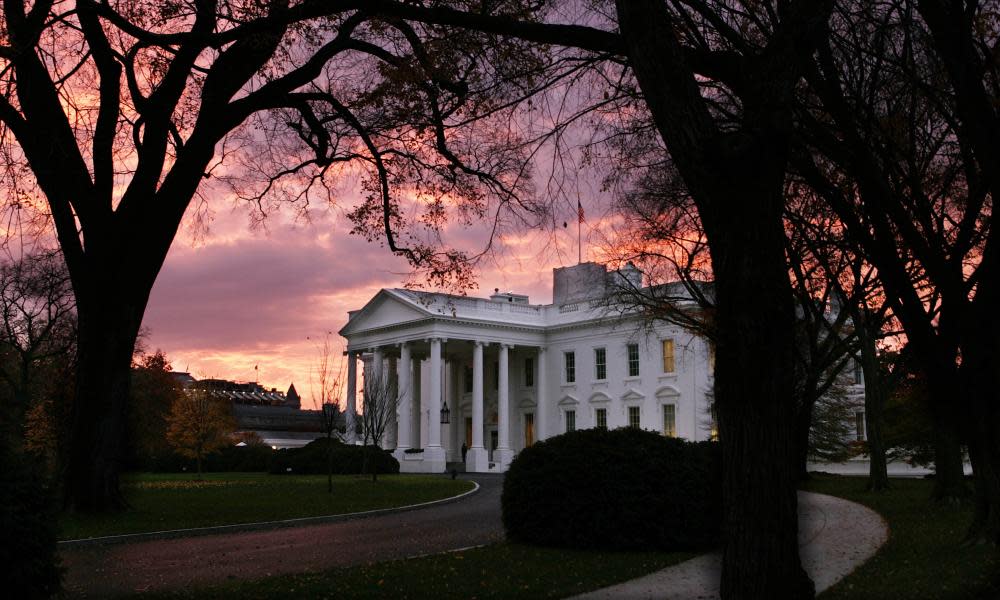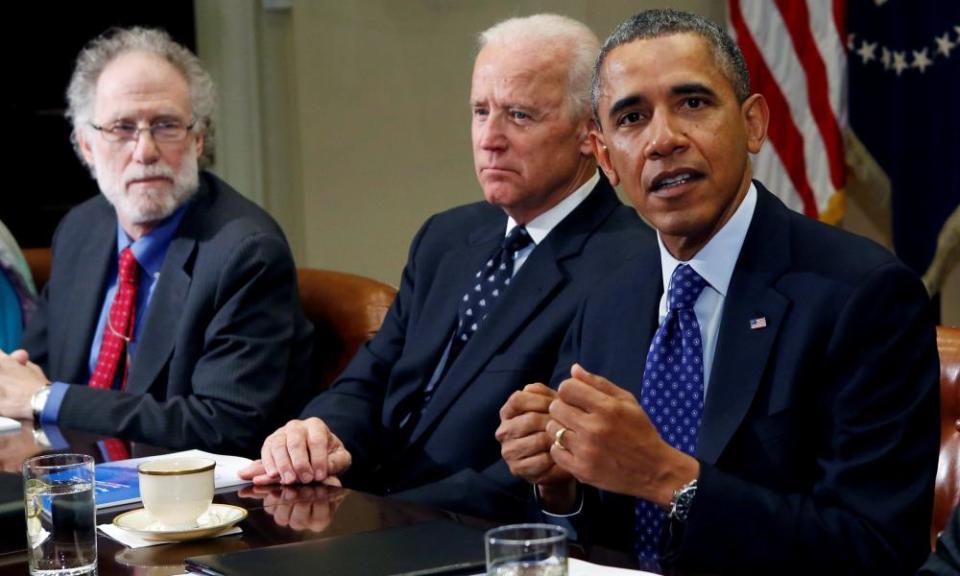After Trump review: a provocative case for reform by Biden and beyond
- Oops!Something went wrong.Please try again later.
- Oops!Something went wrong.Please try again later.

At times, the Trump administration has seemed like a wrecking ball, careening from floor to floor of a building being destroyed, observers never quite knowing where the ball will strike next. At others, it has worked stealthily to undermine rules and norms, presumably fearing that, as the great supreme court justice Louis Brandeis wrote, “sunshine is the best of disinfectants”.
Related: What next? Three books for America after Trump
These changes, far beyond politics or differences of opinion on policy, should trouble all those who care about the future of the American republic. Jack Goldsmith and Bob Bauer, veterans of Republican (Bush) and Democratic (Clinton) administrations, are students of the presidency whose scholarship is informed by their service. They have combined to write a field guide to the damage and serious proposals to undo it.
Presidencies do not exist in a vacuum, and many of the excesses of which the authors complain did not begin in 2017. But Trump upped the stakes: the violations of rules and norms are not merely quantitatively more numerous but qualitatively different. Whether seeking to fire the special counsel investigating him, making money from his businesses or attacking the press, he has made breathtaking changes.
As the authors write, “Trump has merged the institution of the presidency with his personal interests and has used the former to serve the latter”, attacking “core institutions of American democracy” to an extent no president had before.
The American constitutional system, unlike the British, is one of enumerated powers. But over 230 years, norms have arisen. Unlike laws of which violations are (usually) clear, norms are “nonlegal principles of appropriate or expected behavior that presidents and other officials tacitly accept and that typically structure their actions”. In an illustration of the great American poet Carl Sandburg’s observation that “The fog comes on little cat feet”, norms “are rarely noticed until they are violated, as the nation has experienced on a weekly and often daily basis during the Trump presidency”.
Those two axioms – that Trump’s offences are worse than others and that norms can easily be overcome by a determined president – show reform is essential.
The first section of After Trump deals with the presidency itself: the dangers of foreign influence, conflicts of interest, attacks on the press and abuses of the pardon power.
Here the reforms – political campaigns reporting foreign contacts, a requirement to disclose the president’s tax returns and criminalizing pardons given to obstruct justice – are generally straightforward. Regarding the press, where Trump has engaged in “virulent, constant attacks” and tried to claim his Twitter account was not a public record even as he happily fired public officials on it, the authors would establish that due process applies to attempted removal of a press pass and make legal changes to deter harassment of or reprisals against the media because “the elevation of this issue clarifies, strengthens, and sets up an apparatus for the enforcement of norms”.
Goldsmith and Bauer’s second section focuses on technical legal issues, specifically those surrounding special counsels, investigation of the president, and the relationship between the White House and justice department.
The American constitution is far more rigid that the British but it too has points of subtlety and suppleness. One example is the relationship between the president and an attorney general subordinate to the president but also duty bound to provide impartial justice, even when it concerns the president.
The issues may seem arcane, but they are vital: “Of the multitude of norms that Donald Trump has broken as president, perhaps none has caused more commentary and consternation than his efforts to defy justice department independence and politicize the department’s enforcement of civil and criminal law.”
And yet even as the attorney general, William Barr, sought a more lenient sentence for Roger Stone, stood by as Trump fired the US attorney in New York City, and kept up a “running public commentary” on an investigation of the origins of the investigation into the Trump campaign, the authors oppose those actions but remain cautious. They decline to endorse some of the more radical proposals, such as separating the justice department from the executive branch.

In particular, cases on “mixed motives” remain vexing, as there is “no sharp line between acceptable political factors that inform law enforcement decisions and unacceptable politicization of law enforcement”. They stress instead “political accountability” and “transparency of executive branch action” to promote external accountability.
Thus the authors would tighten rules on bringing election cases and propose a series of complex reforms to promote transparency to Congress and the public. Ironically, they would actually expand the attorney general’s supervisory role over special counsels. In the end, though, it really does come down to norms: “It will be vital for leaders in the justice department to reemphasize the norm of rule-following even in crisis situations.” Whether this will work if law becomes weaponized again is unclear.
The authors do not wish to see a weak presidency. Instead, in the formulation of historian Arthur Schlesinger Jr, they favour “a strong presidency within an equally strong system of accountability”. Congress is part of the problem too. When subpoenas are ignored even during an impeachment inquiry, something has changed.
Not all the reforms the authors propose will find ready agreement, yet all are worthy of respect and should prod opponents into forming their own proposals as the Trump era comes to an end.
Bauer and Goldsmith have thought deeply on steps for the restoration of democratic and constitutional norms. Unringing a bell may be impossible according to the laws of physics; it remains possible in the laws of nations. Equally important is whether it can be done in the hearts of those, in both parties and all three branches of government, who have charge of public affairs. Not for nothing did Lord Acton write that “power tends to corrupt”. Vital reforms may at least reduce that temptation.
After Trump: Reconstructing the Presidency is published in the US by Lawfare Press

